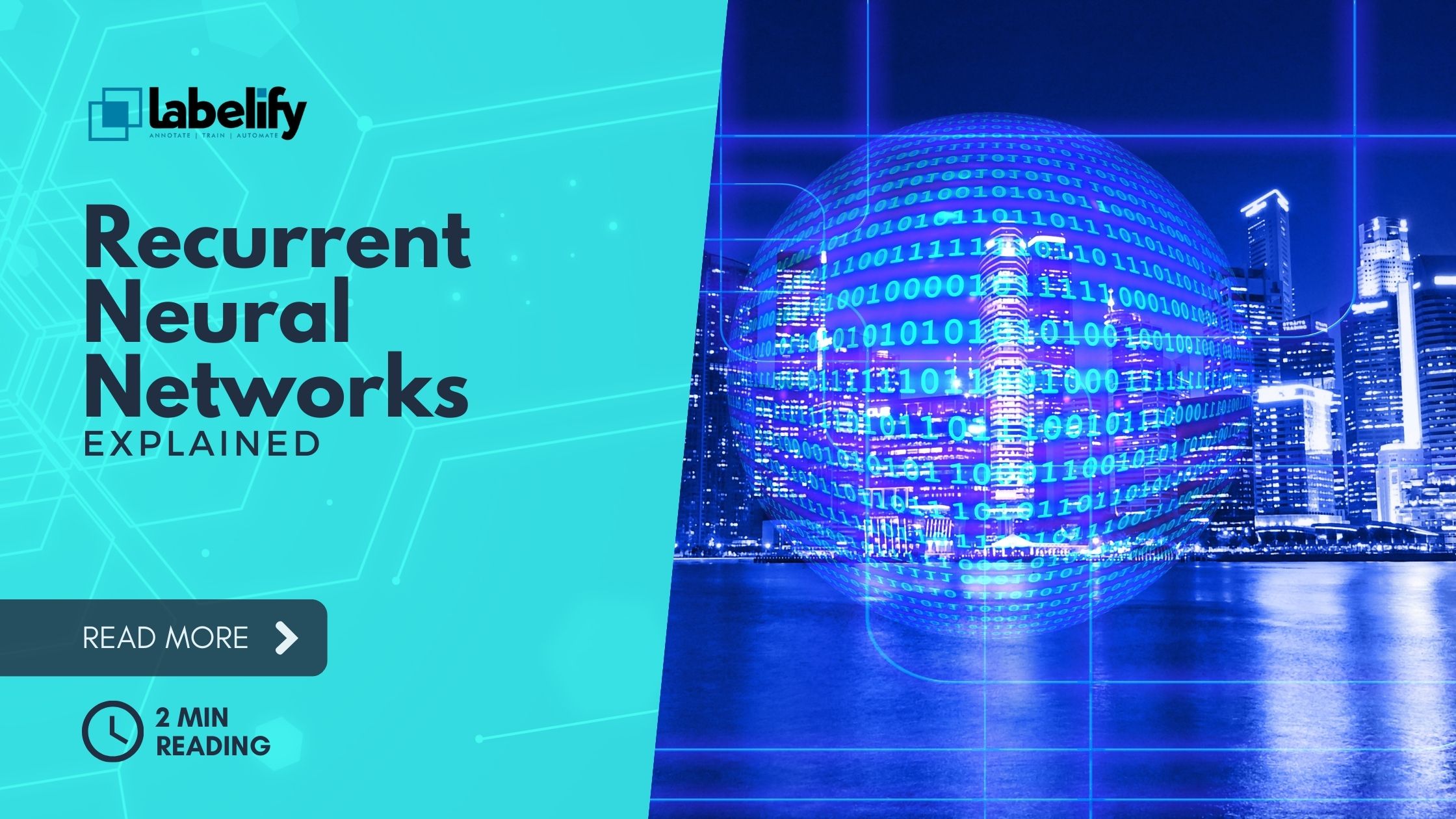Welcome to the ultimate guide on Recurrent Neural Networks (RNNs), a revolutionary tool in the realm of artificial neural networks.
With their unparalleled ability to model sequential data and recognize interdependencies, RNNs have emerged as a game-changer in applications like voice search and translation.
In this comprehensive guide, we will explore the advantages, limitations, and various types of RNNs, providing you with the knowledge to harness the power of these dynamic networks.
Get ready to embark on a journey towards liberation in the world of RNNs.
Key Takeaways
- Recurrent Neural Networks (RNNs) are good at modeling sequential data and have an inherent memory.
- RNNs have signals traveling in both directions through feedback loops, unlike Feedforward Neural Networks.
- Unfolding the RNN architecture over time allows for the modeling of longer sequences.
- RNNs have advantages such as the ability to process inputs of any length and remember information throughout time, but they also have disadvantages such as slow computations and difficulties in training and processing long sequences.
What Are Recurrent Neural Networks
Recurrent Neural Networks (RNNs) are a type of Artificial Neural Network that excel in modeling sequential data. Unlike traditional Deep Neural Networks, which assume inputs and outputs are independent, RNNs rely on prior elements within the sequence. This unique feature allows RNNs to capture temporal dependencies and perform well in applications involving time series data, such as voice search and translation.
However, training RNNs poses challenges due to their recurrent nature. RNN computations can be slow, and training models can be difficult and time-consuming compared to other types of Neural Networks. Additionally, RNNs are prone to problems like exploding and gradient vanishing, limiting their ability to handle long-term dependencies.
Despite these challenges, the applications of RNNs and their ability to model sequential data make them a powerful tool in the field of machine learning.
Comparison With Feedforward Neural Networks
When comparing Recurrent Neural Networks (RNNs) to Feedforward Neural Networks, it is important to note that the former allows signals to travel in both directions through feedback loops, while the latter only allows data to flow in one direction. This fundamental difference between the two types of neural networks gives rise to several important distinctions and limitations of feedforward neural networks:
- Lack of memory: Feedforward neural networks do not have the ability to remember past inputs or previous states, making them less suitable for tasks that require sequential data processing or time series predictions.
- Limited applicability: Feedforward neural networks are mainly used for pattern recognition tasks, such as image classification or speech recognition, where the inputs and outputs are independent of each other.
- Real-world examples: Examples of feedforward neural networks include image recognition systems, spam filters, and recommendation systems that make predictions based on static input data.
- Inability to handle temporal dependencies: Feedforward neural networks struggle with capturing long-term dependencies in sequential data, as they lack the feedback connections necessary to retain and utilize information from previous time steps.
Unfolding Recurrent Neural Networks
Unfolding the architecture of Recurrent Neural Networks (RNNs) over time allows for the representation of RNNs as multiple layers, enabling the modeling of longer sequences and the prediction of sequential data over many time steps.
This unfolding process expands the RNN into a deep neural network, allowing for more complex and accurate predictions.
Applications of unfolding recurrent neural networks include natural language processing, speech recognition, and machine translation, where the ability to capture long-term dependencies is crucial.
However, challenges arise in training unfolded recurrent neural networks.
These challenges include the vanishing gradient problem, which hinders the flow of error gradients through the network, and the computational cost of training deeper architectures.
Despite these challenges, the unfolding of recurrent neural networks holds great potential for advancing the field of sequential data analysis and prediction.
Advantages of RNNs
RNNs offer several benefits in the field of sequential data analysis and prediction. Here are some advantages of RNNs:
- Flexibility: RNNs can process inputs of any length, making them suitable for a wide range of applications such as natural language processing, speech recognition, and time series prediction.
- Memory: RNNs have an inherent memory that allows them to remember information throughout time. This makes them particularly useful for tasks that require capturing long-term dependencies and modeling time series data.
- Weight Sharing: The weights of hidden layers in RNNs can be shared across time steps, reducing the number of parameters and enabling efficient training and inference.
- Combination with CNNs: RNNs can be combined with Convolutional Neural Networks (CNNs) to handle complex data such as images. This combination is effective for tasks like pixel neighborhood prediction and image captioning.
Despite these advantages, training RNN models can be challenging and time-consuming. Issues such as slow computations, gradient vanishing, and difficulty in handling long sequences with certain activation functions pose challenges in training RNNs.
However, ongoing research and advancements in techniques like LSTM and GRU are addressing these challenges and making RNNs more powerful tools for sequential data analysis and prediction.
Disadvantages of RNNs
Despite their advantages, there are several drawbacks associated with Recurrent Neural Networks (RNNs). One of the challenges in training RNNs is their slow computation speed due to their recurrent nature. This can hinder their performance in real-time applications where fast processing is required.
Additionally, training RNN models can be difficult and time-consuming compared to other types of Neural Networks. Processing long sequences with certain activation functions can also be challenging, as RNNs are prone to problems such as exploding and gradient vanishing.
Moreover, RNNs struggle with long-term dependencies and cannot be easily stacked into very deep models. However, researchers have developed techniques to overcome these limitations, such as using gating mechanisms like Long Short-Term Memory (LSTM) and Gated Recurrent Units (GRU) to address the gradient vanishing problem and improve the learning of long-term dependencies.
These techniques have significantly improved the performance and usability of RNNs in various applications.
Types of Recurrent Neural Networks
To further explore the capabilities of Recurrent Neural Networks (RNNs) in handling sequential data, it is important to understand the different types of RNN architectures commonly used in various applications.
Here are four types of RNNs:
- One-to-One RNNs: These have a single input and a single output, making them suitable for tasks such as image classification.
- One-to-Many RNNs: With a single input and multiple outputs, these RNNs are used in applications like music generation and image captioning.
- Many-to-One RNNs: These RNNs converge a sequence of inputs into a single output, making them useful for sentiment analysis and other classification tasks.
- Many-to-Many RNNs: Generating a sequence of output data from a sequence of input units, these RNNs can be divided into equal and unequal size categories.
Understanding these different types of RNNs is crucial for their successful application in tasks such as natural language processing. However, it is important to acknowledge the challenges in training deep RNN models, such as slow computations and the potential for exploding or vanishing gradients.
Applications of Recurrent Neural Networks
Now transitioning to the topic of applications, Recurrent Neural Networks (RNNs) find wide use in a variety of fields due to their ability to effectively model sequential data.
One limitation of RNNs is their handling of noisy data. Since RNNs rely on prior elements within a sequence, noisy data can disrupt the learning process and negatively impact performance. However, researchers have explored techniques such as noise reduction algorithms and regularization methods to mitigate this issue.
Another factor that affects RNN performance is the choice of activation function. Different activation functions, such as sigmoid, tanh, and ReLU, have varying impacts on the network’s ability to capture and process sequential patterns. Selecting the appropriate activation function is crucial for achieving optimal performance in RNN applications.
Best Practices for Training RNNs
Continuing the exploration of Recurrent Neural Networks (RNNs) and their applications, it is essential to delve into the best practices for training these networks. To ensure optimal performance and avoid common issues, here are some key strategies:
- Regularization techniques for training RNNs:
- Implement dropout regularization to prevent overfitting by randomly disabling connections between recurrent units.
- Use L1 or L2 regularization to add a penalty term to the loss function, encouraging the network to learn simpler and more generalizable representations.
- Strategies for handling vanishing and exploding gradients in RNN training:
- Apply gradient clipping to limit the magnitude of gradients during backpropagation, preventing them from becoming too large or too small.
- Use alternative activation functions, such as the rectified linear unit (ReLU), to mitigate the vanishing gradient problem.
Frequently Asked Questions
Can Recurrent Neural Networks Handle Inputs of Varying Lengths?
Recurrent Neural Networks (RNNs) have the ability to handle inputs of varying lengths by using techniques specifically designed for handling input sequences with different lengths.
These techniques include padding, where shorter sequences are padded with zeros to match the length of the longest sequence, and masking, where the model is trained to ignore the padded values during computation.
These innovative approaches allow RNNs to effectively process and learn from variable length inputs, making them a powerful tool in handling sequential data.
How Do Recurrent Neural Networks Handle Long-Term Dependencies?
Recurrent Neural Networks (RNNs) handle long-term dependencies by utilizing their inherent memory retention capabilities. They excel at handling sequential data and can effectively retain information over time, making them suitable for tasks such as time series prediction.
RNNs are innovative and visionary in their approach, allowing for the modeling of longer sequences through the unfolding of the network architecture. They offer a concise and efficient solution for processing inputs of varying lengths and ensuring the retention of important dependencies throughout the sequence.
What Are Some Common Challenges in Training RNN Models?
Some common challenges in training RNN models include:
- Overcoming overfitting: Overfitting occurs when the model becomes too complex and fails to generalize well to new data. To address this challenge, careful regularization techniques can be employed.
- Dealing with vanishing/exploding gradients: Vanishing/exploding gradients can hinder the training process by either causing the gradients to become extremely small or extremely large. Gradient clipping is a technique often used to mitigate this problem.
- Training on long sequences: Training on long sequences can be challenging due to the difficulty of capturing long-term dependencies. Architectural modifications, such as using LSTM or GRU units, can help in capturing these dependencies.
Addressing these challenges requires:
- Careful regularization techniques
- Gradient clipping
- Architectural modifications
These techniques can help in training RNN models effectively.
What Are the Differences Between the Four Types of Recurrent Neural Networks?
The four types of recurrent neural networks (RNNs) are One-to-One, One-to-Many, Many-to-One, and Many-to-Many.
Each type has distinct characteristics and applications.
One-to-One RNNs are used in image classification, while One-to-Many RNNs are employed in music generation and image captioning.
Many-to-One RNNs are useful for sentiment analysis, and Many-to-Many RNNs are utilized for generating output sequences from input sequences.
Each type has its advantages and limitations, making them suitable for different use cases in various domains.
Can RNNs Be Combined With Other Types of Neural Networks for Improved Performance?
Combining RNNs with Convolutional Neural Networks (CNNs) has shown promising results in various applications. By leveraging the strengths of both architectures, RNNs can benefit from the spatial and hierarchical features learned by CNNs, while CNNs can benefit from the temporal modeling capabilities of RNNs.
This combination has been particularly successful in tasks such as image captioning and video analysis. Additionally, exploring the applications of RNNs in natural language processing has opened up new possibilities in areas such as machine translation, sentiment analysis, and speech recognition.
Conclusion
In conclusion, Recurrent Neural Networks (RNNs) offer a powerful solution for modeling sequential data, leveraging their unique ability to recognize interdependencies and retain information across time.
While they have advantages in handling autocorrelative data and modeling longer sequences, RNNs also face limitations such as potential slow computations and challenges in training and processing long sequences.
Nevertheless, with a deep understanding of the different types of RNNs and their applications, researchers can utilize RNNs effectively in various domains, paving the way for further advancements in artificial intelligence.




